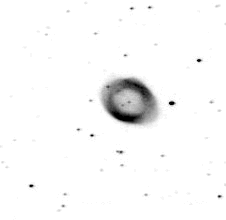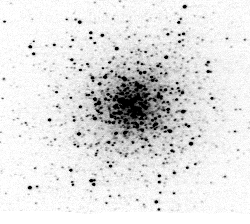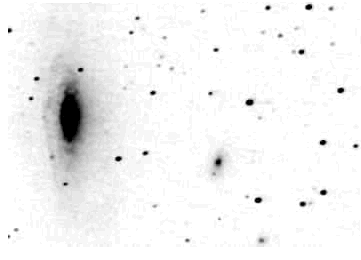From Cheapcam to $$Cam
Posted On January 1, 2000
From CheapCam to $$$CAM
the short story of one OCA Members journey into CCD imaging
The following story appeared in th Sirius Astronomer in December 1999. Repeated here now - just because I can 🙂 - Liam Kennedy
============
Oh woe is me.
Imagine my dilemma. I have had my wonderful 10" LX200 for the past 18 months and from the moment I handed over the money for it I have been dreaming and planning for the day when I could purchase a CCD imager as well. I am not someone who makes purchase decisions of these magnitudes very lightly - Instead I agonize over every piece of information and advice that I can possibly obtain about every aspect of the product.
My particular journey into CCD Imaging actually started out in a very modest and cost-effective way. With the help of a Sky & Telescope magazine article I converted a very cheap non-astronomical CCD unit into a pretty useable system good for planetary and lunar imaging. I converted a Connectix QuickCam Monochrome camera by hacking a "somewhat" round hole in the front big enough to allow me to insert an eyepiece adapter. This allowed me to directly insert this device directly into the prime focus of my telescope. I was completely surprised when after all my amateurish efforts I actually saw an image appear on my computer screen! You can see some of the results of this early work on my web site at http://www.thekennedys.net/astronomy. One of the particularly interesting pieces of work was a 2 hour animation I created one night out at Anza when three of Jupiter's moons were moving into occultation and transit at the same time - which you can see at http://www.thekennedys.net/jupiteranimation .
Even despite the limitations of the QuickCam (and others in OCA have done some truly remarkable work - which should be published) I did find that it taught me a few things which have helped me in moving on to the world of deep space CCD astronomy. One of the best lessons I was taught was related to the art of placing and focussing the image onto the CCD chip. In comparison to the more costly CCDs getting the image and focussing using the QuickCam is so easy - mainly because of the very fast image download times which allow for a very easy and quick visual feedback mechanism.
So - the QuickCam was an interesting diversion for a while - but the months went by - and eventually I just had to turn my attention to upgrading to a more capable device. Something, which I could use to image fainter objects than my LX200 and I my eyes alone, could even see. Like my purchase of the LX200 - I spent endless hours seeking advice and reading articles - buying books until I felt I had enough rudimentary knowledge to make an informed decision. I placed a question on the Meade User Group List (MAPUG) and also onto the new OCA forum asking for some final pieces of advice from the experts out there on what I should do. I received a bunch of very helpful advice from OCA Members like Dean Jacobsen.
I decided to get an ST-7 from SBIG - which I purchased from my favorite Astronomy shop - Oceanside Photo and Telescope http://www.optcorp.com . Along with the CCD I purchased several other items including a Zero-Image-Shift focuser (the NGF-S). My QuickCam experiences (and the advice of from other OCA friends) had taught me there is far too much movement of the primary mirror when manually focussing using the standard mechanism on a telescope like the LX200.
After thoroughly reading the SBIG Manuals and setting up the CCD and playing around for a few days in my living room I made a trip up to Anza on an off-star-party weekend to see first-light with my new device. I would have gone up on any weekend - but I was particularly grateful to setup for the first time on an "off-weekend" so that I could spare my neighboring astronomers from the inevitable initial tantrums as I tried to figure out what goes where. In the end I must admit there were very few points of total frustration. I mainly just took my time with it all and accepted the fact that I couldn't possibly start out being an expert.
On that first night I managed to take images of the moon, M3, M57 and M17 - and on the whole I was quite pleased with the results.



Since then I have progressed onto my first galaxies with the help of a neighboring pad owner John. I was totally amazed at the sensitivity of the ST7 and how easy it was to see the faint smudges of galaxies (or even multiple Galaxies) with just a few seconds of exposure in focus mode.
Below you can see my first ever galaxy is NGC 7331 (along with a few other smudges)..
Focussing is in many ways much trickier than I had expected as the higher resolution of the ST7 results in longer download times than the QuickCam.
I do know that I have a very long way to go before I can call myself any sort of an expert in CCD imaging. I also know for certain that being a member of OCA has allowed me to progress in this hobby far faster than I could ever have managed on my own.
Check out the latest images on my site http://www.thekennedys.net/astropics - you'll certainly find the images have room for improvement. I have even included some of my best "failures" for all to see. All comments are appreciated!
Oh woe WAS me! Not any more!
Liam Kennedy
OCA Webmaster